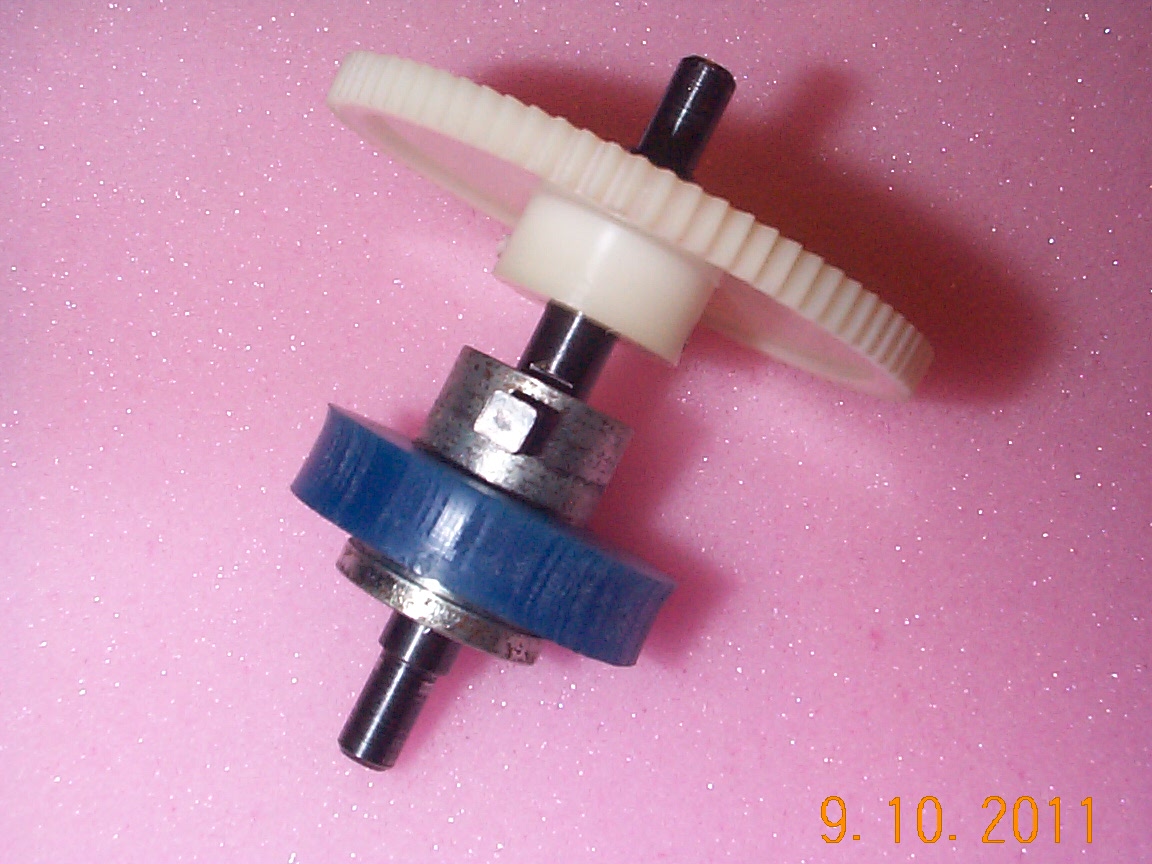
The ball pitch roller assembly
Restoring a Bally/Midway Big Bat Baseball Arcade Game
Bally/Midway released a "pitch and bat" baseball game in 1984. "Big Bat" is a solid-state game with mechanical and electro-mechanical features.
It is unclear just how many Big Bat machines were produced by Bally/Midway. Relatively few survive today, and it is very rare to uncover a machine in working condition.
Why are there so few games in working condition?
It is not unusual for pinball games from the 1980s to suffer from printed circuit board failures. As is the case with those pinball machines, circuit boards can be repaired or replaced. A much larger problem involved the mechanical design of Big Bat, which relied on consumable rubber parts which were not designed to last more than a few years.
Those parts include the ball lift belt, which is commonly found brittle and broken, and the ball pitch rollers, which are usually missing or melted and deformed. Sometimes the balls are missing as well.
Lastly, the games are relatively large and heavy. Large and heavy games, when deemed unfixable, are often disposed of.
Are these rubber parts still available?
OEM parts are no longer available, and have been out of production for many, many years. New Old Stock (NOS) parts are unlikely to be useful, even if they could be found, since oxidation of the rubber material would have made those parts unusable.
However, there is a solution...
The Ball Lift Belt
The Ball Lift Belt is 1" wide, 1/16" thick, and 44" long. It is made from clear urethane. The width and thickness is a standard size for flat urethane belts. This type of belt may be ordered in virtually any length. Since this material stretches significantly, you should NOT purchase a belt of the exact length you would measure.
The actual distance around the two ball lift pulleys is 47". A urethane belt of this length would become much too loose. The proper length to purchase is 44". This assumes a stretch factor of about 8%.
The Ball Pitch Rollers

The ball pitch roller assembly
The Ball Pitch Rollers are made from urethane/polyurethane rubber. The original rollers were dark blue in color. The proper replacement is a urethane ring, 1/2" thick. The outside diameter of the ring must be 1-3/4". The inside diameter of the ring is 3/4". These rings press onto the steel hubs, and are turned by the gears connected to the ball pitch motor. A source for these urethane rings is to purchase a urethane tube with the the proper inner and outer dimensions, then slice off two cross sections, each 1/2" thick.
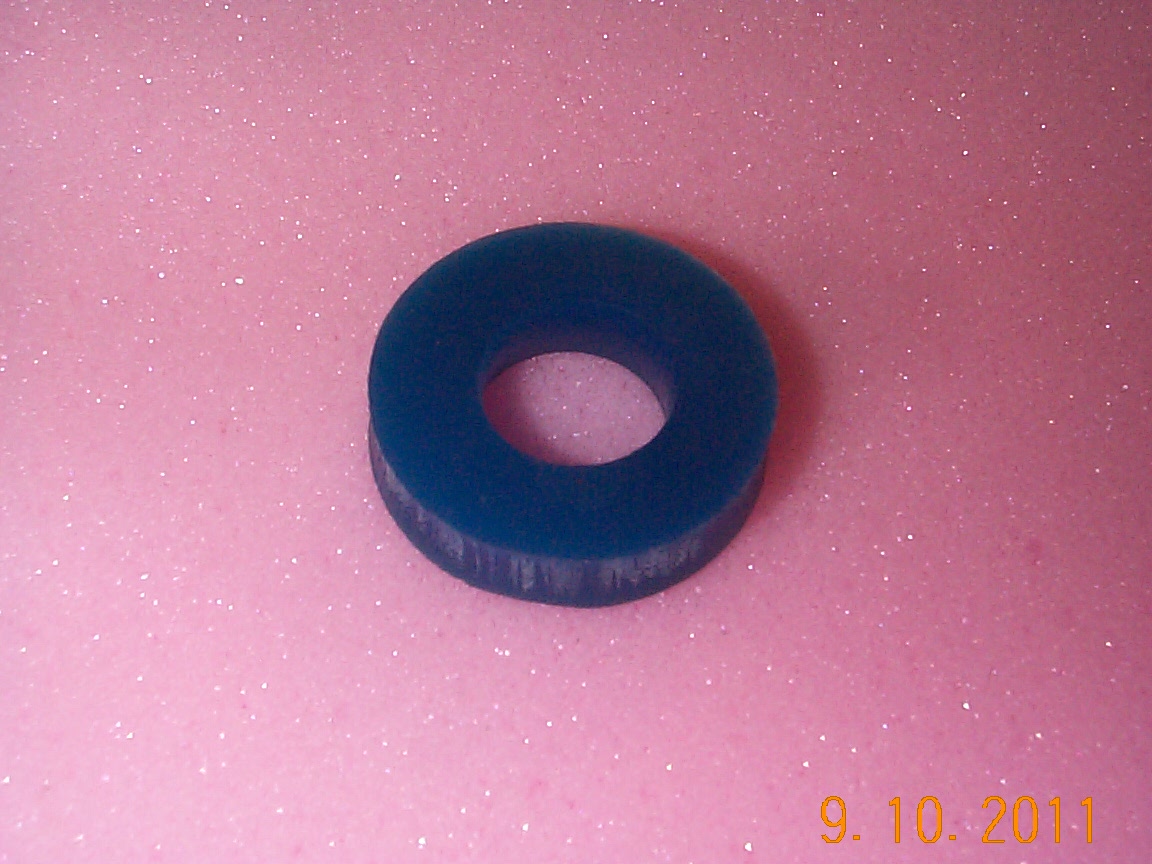
Urethane ball pitch roller rubber
The "shore durometer" hardness of the material is probably important, and something I am still experimenting with. The hardness should be rated on the "A" durometer scale, and would likely fall somewhere in the range of 40 (soft) to 90 (hard). Although this material may be dyed to many colors, for our purpose, the color is not important.
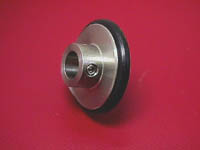
A possible alternative to the urethane roller - a
steel drive roller
An alternative would be to remove the hubs and replace with steel drive rollers or grooved pulleys designed for round belts. The grooved pulleys should have an outer diameter of 1-1/2", to allow room for a rubber ring to be installed in the groove.
The Baseballs are missing!
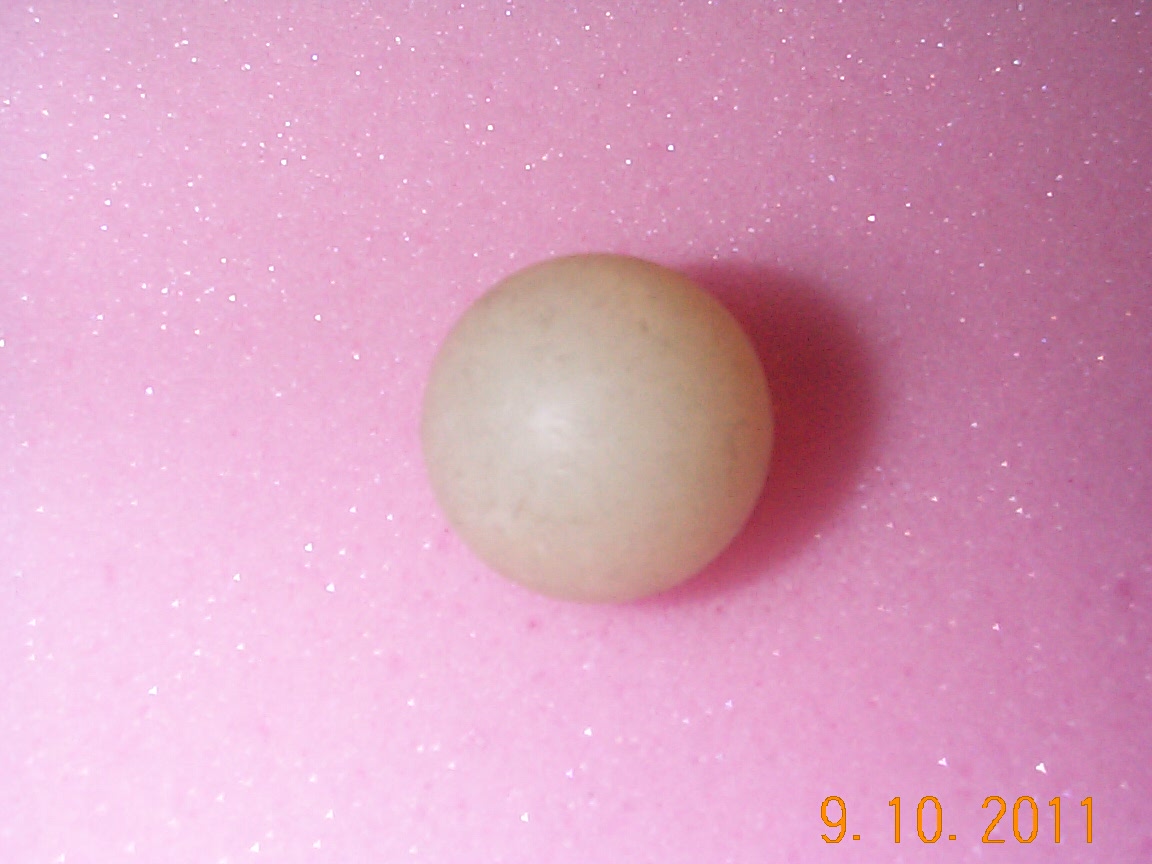
1" white nylon ball
The baseballs are easily replaced. There are four (4) 1" white nylon balls in the game. These are essentially constructed of the same material as a foosball, but are smaller. These are readily located in a variety of plastic materials on the Internet. Nylon is the proper material, and they should cost less than $2.00 each. The game is designed to be played with four balls. Do not place more than four balls in the game. There is only room for the game to properly work with four balls. Five is too many, and could cause damage to the ball lift belt.
The ball pitch gears are missing or broken
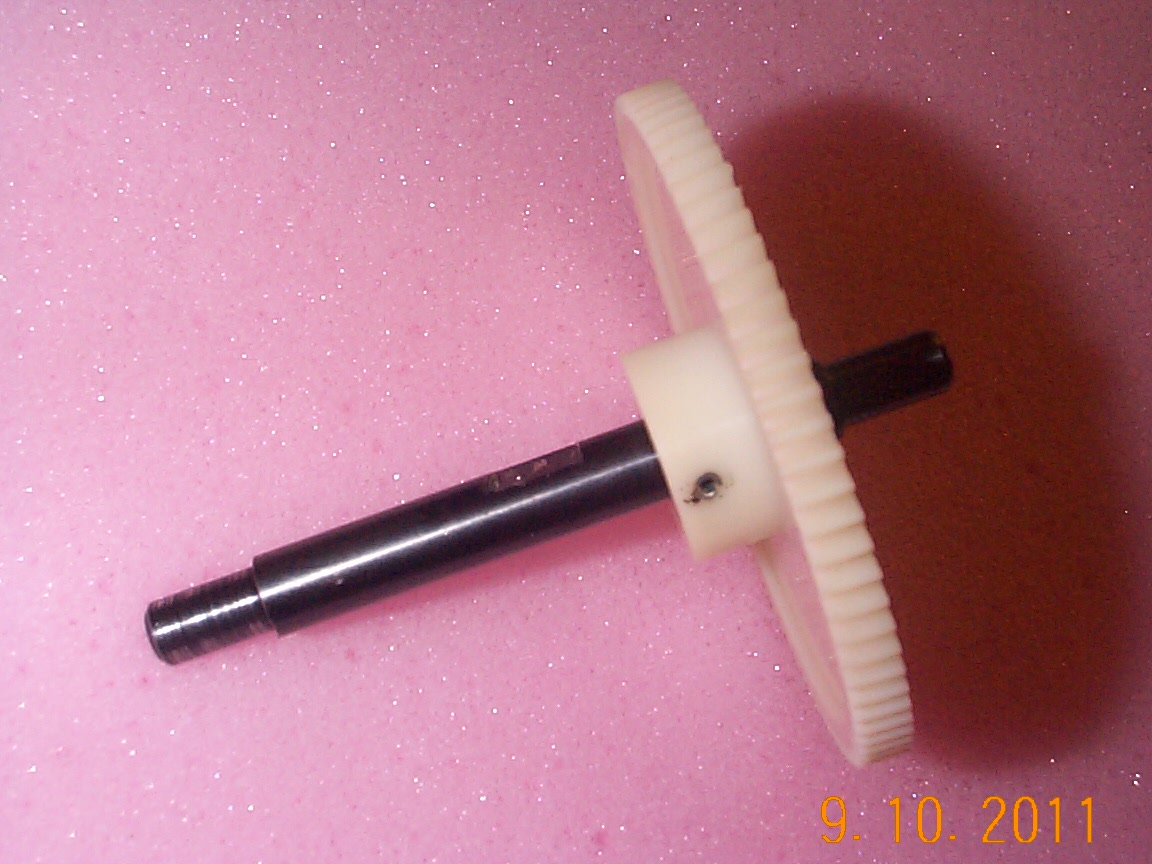
Ball pitch gear
This is a much more serious problem. However, replacement gears may be available. The two gears attached to the ball pitch spindles are plastic with eighty (80) teeth. Look at a source such as Boston Gear.
The smaller drive gear attached to the ball pitch motor is also plastic, but with only xxx teeth.
A failed ball pitch motor can probably be repaired. A missing motor poses more of a challenge. It will be difficult, but perhaps not impossible, to replace.
Schematics! I need schematics!
Unfortunately, I do not have a copy of the manual, parts list, or schematic for Big Bat. I know for certain that a manual was printed for this game. I have not been able to locate one, despite repeated searches. I do not know with certainty that there was ever a parts list or schematic printed.
However, that does not mean that there is no repair guidance whatsoever.
Big Bat used the popular AS-2518-133 MPU (CPU) processor board. There is ample documentation and repair information for this board. EPROMs for this game are available here:
Big
Bat MPU EPROM U2
Big Bat MPU EPROM U6
Big Bat Sound EPROM U3
Big Bat Sound EPROM U4
Big Bat Sound EPROM U5
A combined power supply/ lamp driver/ solenoid driver board (part number xxxxx) was used for Big Bat. This board was used in a few other games, and therefore there is some useful basic information available from the manuals for those other games.
Sound was produced using a Bally "Squawk and Talk" board (part number xxxxx). This board was also used by other games, and there is good troubleshooting information available for this board as well.
Game Lubrication
You should purchase a tube of Dow Corning Molykote #44 high temp medium silicone grease. This grease is safe to use on plastic parts. It should be used to lubricate the upper ball lift pulley. Disassemble the pulley and clean the dirt and grime from the steel pin which holds the pulley. Clean the brass supports which hold the pin, and the inside of the black plastic pulley as well.
Apply a generous amount of the silicone grease to the hole in the pulley, then reassemble. Add a couple drops of 3-in-1 or other light machine oil to the brass pin supports on both ends of the steel pin. The pulley wheel should spin smoothly and almost silently. Clean any extra grease from the assembly, so as not to contaminate the urethane belt.
Next, disassemble and remove the ball launch tube, and expose the ball pitch gear assemblies. Place a couple drops of 3-in-1 or other light machine oil to the brass spindle supports, both upper and lower. Place a modest amount of silicone grease on the mating edge of the plastic spur gears themselves. They should then turn with very little noise and friction.
There is one more assembly which requires lubrication. The batting assembly should be disassembled and cleaned, and the metal gearing coated with a modest amount of silicone grease. Loosen the plastic guides slightly if necessary. These should be clean and move smoothly, and not bind upon the rack and pinion batting assembly.
Cleaning the playfield
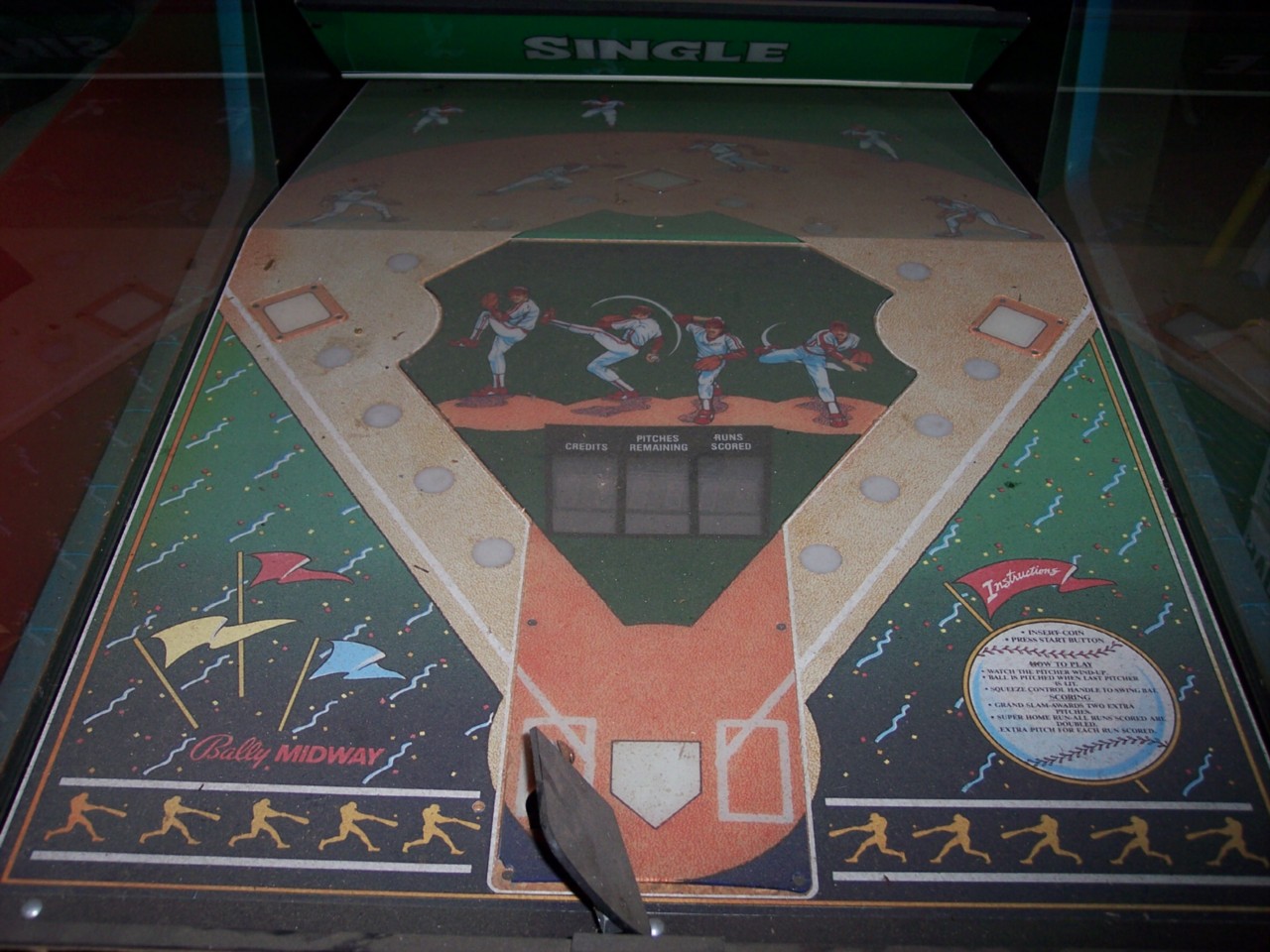
A very dirty Big Bat playfield
The playfield should be cleaned. If it is very soiled, a very small amount of water (yes, a small amount will not harm it) on a soft cloth may be used to remove the dirt. The playfield should then be cleaned with pinball playfield cleaner with an appropriate wax base. The wax will protect the playfield from further wear.
How does the game play?
Insert a coin. Press the start button.
The ball lift and the ball pitch motors turn constantly during game play. The ball release solenoid activates, allowing one ball to drop into the end of the ball launch tube. This ball is detected by an optical sensor.
When a ball is detected, the green arrow next to the ball launch tube flashes and the illuminated pitcher sequence begins. The ball launch solenoid is activated, which pushes the ball between the spinning ball pitch rollers, propelling the ball out the end of the tube and onto the playfield. The player squeezes the batting mechanism, and if the ball is hit, it registers a single, double, triple, home run, or super home run, depending on how high the ball was hit.
Appropriate music and verbal comments accompany the game play, thanks to the Bally Squawk and Talk Sound Board.
The game continues until the preset number of pitches have been made. Additional pitches may be earned by scoring home runs. Although I'm certain that the Big Bat manual explains game settings, I do not have a manual available from which to pass along adjustment information.
Will this game work in an arcade?
Yes. The coin mechanisms may be substituted for token acceptors, if desired. It is also possible to hook up a ticket dispenser to the Big Bat game. A cover plate and attachment screw studs are already present in order to accommodate a ticket dispenser.
Ball Pitch and/or Ball Launch solenoids do not operate
If neither solenoid works, as was the case with my game, suspect the fuse hidden underneath the playfield, near the hole where the batting assembly pokes through. This is a 1-amp, slow blow fuse. It is easy to overlook, since it is located far away from the central fuse section on the power supply board.
If the ball launch solenoid operates, but not the ball drop solenoid, it might be the appropriate solenoid control transistor found on the combination power supply/ lamp control / solenoid control board.
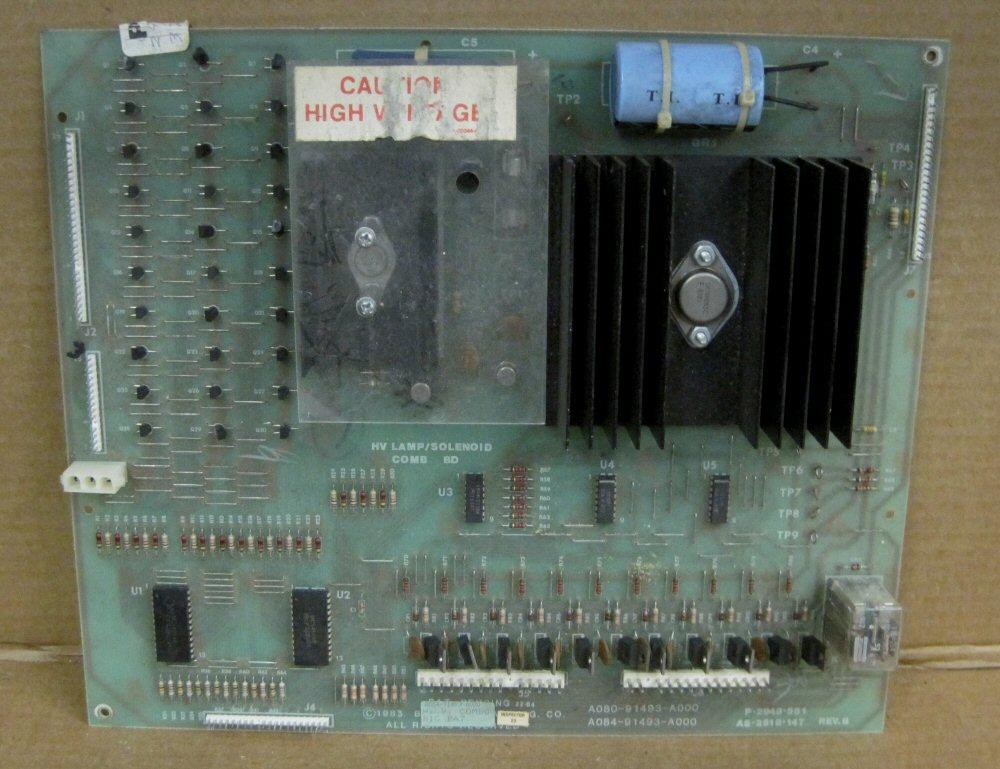
Combination HV power supply/ Lamp control/
Solenoid Control board
If the ball drop solenoid operates, but not the ball launch solenoid, the most likely cause is that the optical sensor has not detected a ball. This optical sensor detects the dropped ball which is awaiting launch. It may be that there is no ball in the path of the optical sensor. You can still test that sensor by placing a folded sheet of paper in the sensor path.
As was the case with the ball drop solenoid, it could be a defective control transistor on the combination power supply/ lamp control/ solenoid control board.